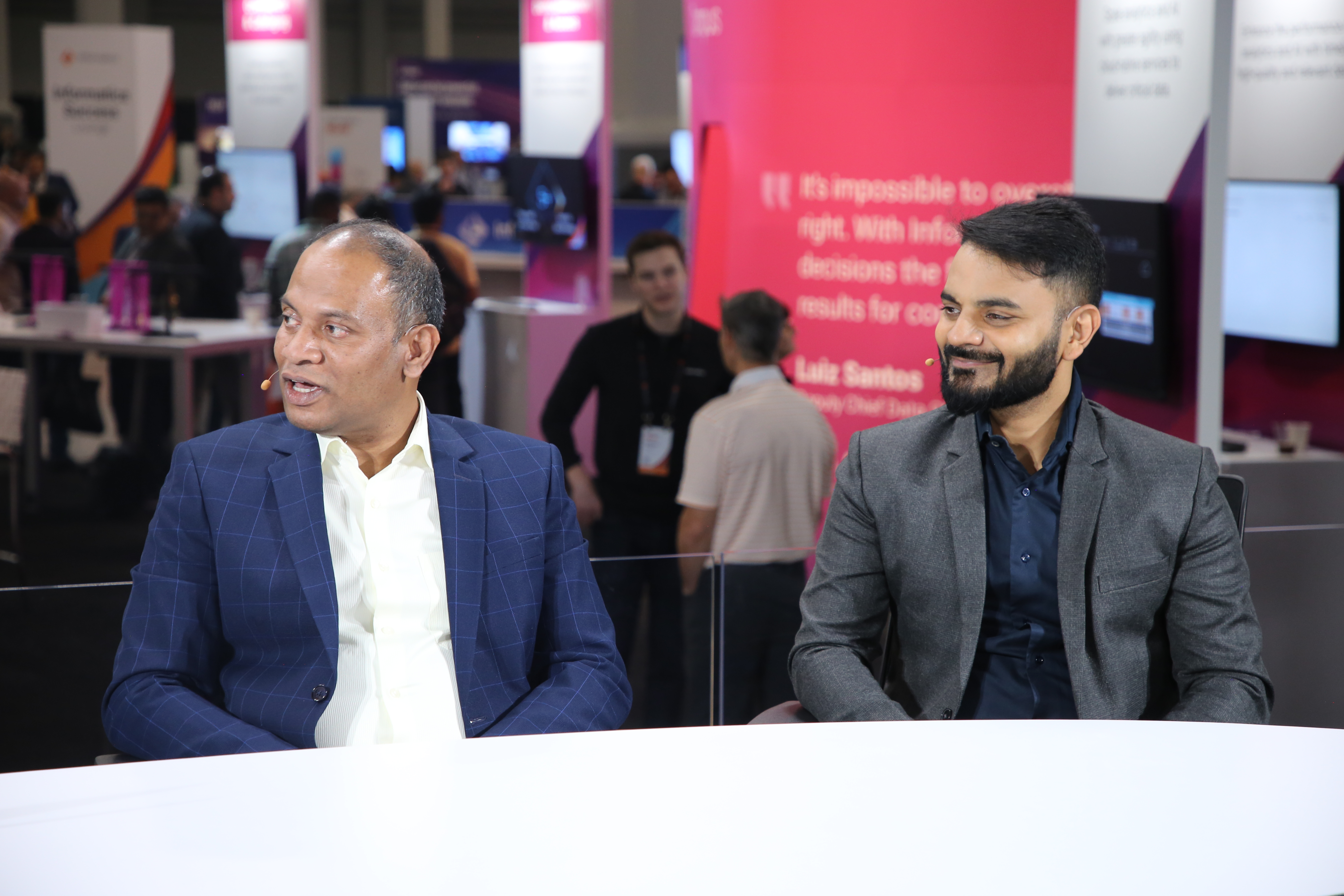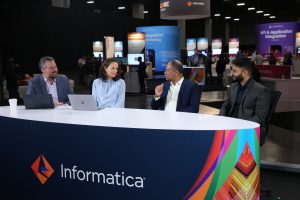 AI
AI
 AI
AI
 AI
AI
Some of the most interesting conversations at this year’s Informatica World, including about enhanced customer experiences, have been with the customers of Informatica Inc., including the National Roads and Motorists’ Association Ltd., which has been a customer for many years.
When considering data values, Informatica thinks about customers first, according to Sumeet Kumar Agrawal (pictured, right), vice president of product management at Informatica. That involves working with Vamsi Krishna Dhalli (left), senior data manager of technology at the National Roads and Motorists’ Association.

National Roads and Motorists’ Association’s Vamsi Krishna Dhalli and Informatica’s Sumeet Kumar Agrawal, speak with theCUBE during Informatica World 2024.
“We work closely with Vamsi and his team to make sure that we understand his use cases, his concerns and also try to figure out how we can give them the best practices from other customers as well,” Agrawal said. “For example, if I see there is a better way of doing a few things, then I try to pass it on to Vamsi and his team so that he can incorporate that in his roadmap.”
Agrawal and Dhalli spoke with theCUBE Research’s Rob Strechay and Rebecca Knight at Informatica World, during an exclusive broadcast on theCUBE, SiliconANGLE Media’s livestreaming studio. They discussed how best to handle diverse data sources and how to leverage AI to enhance customer experiences. (* Disclosure below.)
When one considers how data is handled within organizations, it’s often coming from all different places. It has to then be rationalized into entities and metadata has to be carried over so that one can come out with an accurate answer.
The prime use case within Dhalli’s industry is the single customer view, especially when it comes to enhanced customer experiences. That’s where Informatica came into play, according to Dhalli.
“If you see a lot of business units, a wide variety of different data sources, to bring in and procure all the data into our data lake and forming the single customer view across multiple clusters of information on the source identifiers, it was very unique to Informatica,” he said. “We should be able to contextually match based on their PI information and bring that to the survivorship layer so that who exactly we need to cross-sell, upsell, sending the right communication at the right time.”
If the association needs to talk to a GenAI model, it involves a REST API from Informatica. It’s low-code, no-code, according to Dhalli.
“That means all my CAI developers are ready for use and ready to deploy all the AI solutions using Informatica. So that is one thing. But the critical point here is you need to be data-ready for AI to be successful,” he said. “Without data, there is no AI. So that’s the fundamental way in which we ensure that all the data is coming at the right time with the right data quality in our Google Cloud Platform to power up our AI use cases.”
Here’s the complete video interview, part of SiliconANGLE’s and theCUBE Research’s coverage of Informatica World:
(* Disclosure: TheCUBE is a paid media partner for Informatica World. Neither Informatica Inc., the sponsor of theCUBE’s event coverage, nor other sponsors have editorial control over content on theCUBE or SiliconANGLE.)
THANK YOU